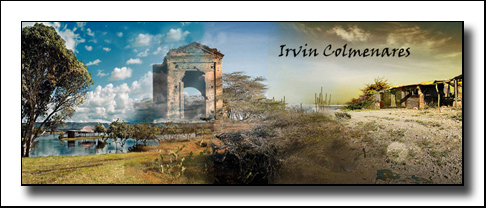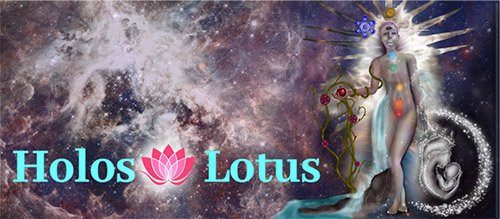Mi banda sonora. Chicago | My soundtrack. Chicago

Hace poco mientras visitaba a un amigo comenzó a sonar en su Alexa una canción que me resultó bastante conocida. El inicio de la batería seguido por el sonido del teclado era inconfundible para mis oídos, se trataba del tema Chicago, interpretado por un célebre cuarteto de música folk-rock norteamericana, compuesto por Crosby, Still, Nash and Young.
Inmediatamente le pregunté a mi amigo si conocía el tema. Él es mucho más joven que yo, pero sus padres también son amantes de esa música de los años setenta. Mi amigo me respondió que en efecto había escuchado el tema muchas veces, él como profesor de inglés entendía perfectamente la letra de la canción. Comentó que era un tema muy bueno, pero nada más. Le pregunté si conocía el contexto en el que fue creada la canción y me dijo que no.
Durante mucho tiempo estuve confundido de donde había escuchado la canción por primera vez. Pensé que había sido en la película “Las Fresas de la Amargura”, donde suenan varios temas del conocido cuarteto. Sin embargo, buscando en internet me di cuenta que la película fue estrenada en 1970 y la canción es del año 1971, por lo que la fuente de mi escucha tuvo que haber sido otra.
Lo más probable entonces era que hubiese escuchado Chicago en Radio Capital, la emisora radial de Caracas que en los años setenta me mantenía al tanto de los últimos temas que se lanzaban en el mundo de la música Rock.
El tema me gustó y como ya estaba en el Pedagógico, tomé algún dinero de mi beca de transporte y me fui a Don Disco de Chacaíto a comprar el álbum “4 way street” donde aparecía el tema. Esa beca de transporte era casi mágica, con ella no solo pagaba mi pasaje sino que también me alcanzaba para comprar uno que otro disco y los libros que recomendaban mis profesores.
Si la mente no me falla, creo que “4 way street” era un álbum doble que traía como plus la letra de las canciones. Seguramente que fue allí donde encontré la letra para traducirla con el diccionario, otra alternativa sería que vino anexa en alguno de los ejemplares de la revista Rolling Stones, que también compraba ocasionalmente en un kiosco de Sabana Grande, al comienzo del boulevard.

Durante mucho tiempo ignoré el contexto de la canción, pensé que estaba inspirada en alguna de las tantas protestas universitarias que se daban en aquellos tiempos. Quizá por eso no entendía algunos versos de la letra, porque el tema era también ligado a las protestas sociales pero más allá del ámbito estudiantil.
La canción la compuso Graham Nash, hoy de más de ochenta años, cuando fue testigo del célebre juicio “De los siete” que tuvo lugar en la ciudad de Chicago entre los años 69 y 70. En el 2020 Netflix produjo una película sobre el juicio.
Todo comenzó con una manifestación convocada por sectores de los movimientos civiles norteamericanos para protestar por la guerra de Vietnam.
El objetivo de la protesta era aprovechar la convención demócrata de 1968 que se daría en la ciudad de Chicago y que se transmitiría en vivo por la TV, para protestar en contra de la guerra.
Pero lo que inicialmente se había pensado como una protesta pacífica, con una corta marcha por las calles de la ciudad de Chicago, pronto degeneró en importantes enfrentamientos con las fuerzas policiales, con un saldo de numerosos detenidos, entre ellos los dirigentes de las convocatorias a las marchas.
El primer verso de la canción nos habla de un personaje que está amordazado y esposado en un tribunal. Aunque parezca mentira ese personaje existió, se trataba de Bobby Seale, dirigente del grupo Panteras Negras y que fue detenido durante las manifestaciones.
En el tribunal Seale era bastante contestatario, no perdía oportunidad de denunciar lo injusto de la situación, y la respuesta del juez fue pedirle a los alguaciles del tribunal que lo esposaran y lo amordazaran a una silla para que no pudiera seguir interrumpiendo el juicio.
Lo desproporcionado de la decisión fue una de las tantas irregularidades que se cometieron durante el juicio, por lo que años más tarde fue declarado nulo por una instancia judicial superior. Todos los inculpados salieron en libertad.
En otros versos la canción nos invita a participar de los movimientos sociales, invita a soñar con un mundo en libertad y libre de tantas regulaciones sociales.
Años más tarde, Graham Nash reconoció que en ese último verso que les mencionó se le había ido la mano. En una entrevista dada a un periodista le comentó que ahora no hablaba de un mundo libre de regulaciones, porque ciertamente muchas regulaciones son necesarias para poder convivir civilizadamente. Y ponía el ejemplo de la luz roja del semáforo, la que sin duda es una norma a la que hay que respetar. Si no le hiciéramos caso al semáforo la cantidad de accidentes de tránsito se dispararían. Por eso en los últimos tiempos cada vez que Nash cantaba la canción hablaba de “muchas normas sociales” y omitía la parte donde dice “¿quién las necesita…?”.
Los más jóvenes quizá no hayan escuchado la canción. De ser así los invito a prestarle atención. De igual modo los invito a que busquen la letra en internet. Verán que muchas de las cosas que dicen siguen teniendo plena vigencia en el convulsionado mundo del siglo XXI.
Gracias por tu tiempo.


Recently, while visiting a friend, a song that sounded quite familiar to me began playing on his Alexa. The opening drumbeat followed by the keyboard sound was unmistakable to my ears. It was the song Chicago, performed by a famous American folk-rock quartet composed of Crosby, Stills, Nash, and Young.
I immediately asked my friend if he knew the song. He is much younger than me, but his parents are also lovers of that music from the seventies. My friend replied that he had indeed heard the song many times and, as an English teacher, he understood the lyrics perfectly. He said it was a very good song, but nothing more. I asked him if he knew the context in which the song was created, and he said no.
For a long time, I was confused about where I had heard the song for the first time. I thought it was in the movie “The Strawberries of Bitterness,” which features several songs by the well-known quartet. However, searching the internet, I realized that the film was released in 1970 and the song is from 1971, so the source of my listening must have been something else.
The most likely scenario was that I had heard Chicago on Radio Capital, the radio station that in the 1970s kept me up to date with the latest songs being released in the world of rock music.
I liked the song, and since I was already at the Pedagogical University, I took some money from my transportation scholarship and went to Don Disco in Chacaíto to buy the album “4 Way Street,” which featured the song. That transportation scholarship was almost magical. With it, I not only paid for my bus fare, but I also had enough to buy the occasional album and the books my professors recommended.

If my memory serves me correctly, I think “4 Way Street” was a double album that included the lyrics as a bonus. That's probably where I found the lyrics to translate with the dictionary. Another possibility is that they came with one of the issues of Rolling Stone magazine, which I also bought occasionally at a newsstand in Sabana Grande, at the beginning of the boulevard.
For a long time, I was unaware of the context of the song; I thought it was inspired by one of the many university protests that were taking place at the time. Perhaps that is why I did not understand some of the lyrics, because the song was also linked to social protests but beyond the student sphere.
The song was written by Graham Nash, now in his eighties, when he witnessed the famous “Trial of the Seven” that took place in Chicago between 1969 and 1970. In 2020, Netflix produced a film about the trial.
It all began with a demonstration called by sectors of the American civil rights movement to protest the Vietnam War.
The aim of the protest was to take advantage of the 1968 Democratic Convention, which was to be held in Chicago and broadcast live on TV, to protest against the war.
But what was initially intended to be a peaceful protest, with a short march through the streets of Chicago, soon degenerated into major clashes with the police, resulting in numerous arrests, including the leaders of the marches.
The first verse of the song tells us about a character who is gagged and handcuffed in a courtroom. Believe it or not, that character really existed. He was Bobby Seale, leader of the Black Panther Party, who was arrested during the demonstrations.
In court, Seale was quite rebellious, never missing an opportunity to denounce the injustice of the situation, and the judge's response was to ask the court bailiffs to handcuff and gag him to a chair so that he could not continue to interrupt the trial.
The disproportionate nature of the decision was one of the many irregularities committed during the trial, which is why years later it was declared null and void by a higher court. All the defendants were released.
In other verses, the song invites us to participate in social movements, inviting us to dream of a world in freedom and free from so many social regulations.
Years later, Graham Nash acknowledged that there was a flaw in that last verse he mentioned. In an interview with a journalist, he commented that he no longer spoke of a world free of regulations, because many regulations are certainly necessary in order to live together civilly. He gave the example of the red light at a traffic light, which is undoubtedly a rule that must be respected. If we ignored traffic lights, the number of traffic accidents would skyrocket. That's why, in recent times, every time Nash sang the song, he talked about “many social rules” and omitted the part where he says “who needs them...?”
Younger people may not have heard the song. If so, I encourage you to pay attention. I also encourage you to look up the lyrics online. You'll see that many of the words are still fully relevant in the turbulent world of the 21st century.
Thank you for your time.








Comunidad Be Entrepreneur

Translated with DeepL.com (free version)
Uf... me llevaste a recuerdos de la infancia y la adolescencia...
Recordar es vivir amigo @irvinc, llore mucho con esta película. El tema "Dale una oportunidad a la paz", fue compuesta por John Lennon. Esta canción fue grabada 1 de junio de 1969.
Gracias por traerme tan bellos recuerdos.
Un abrazo amigo